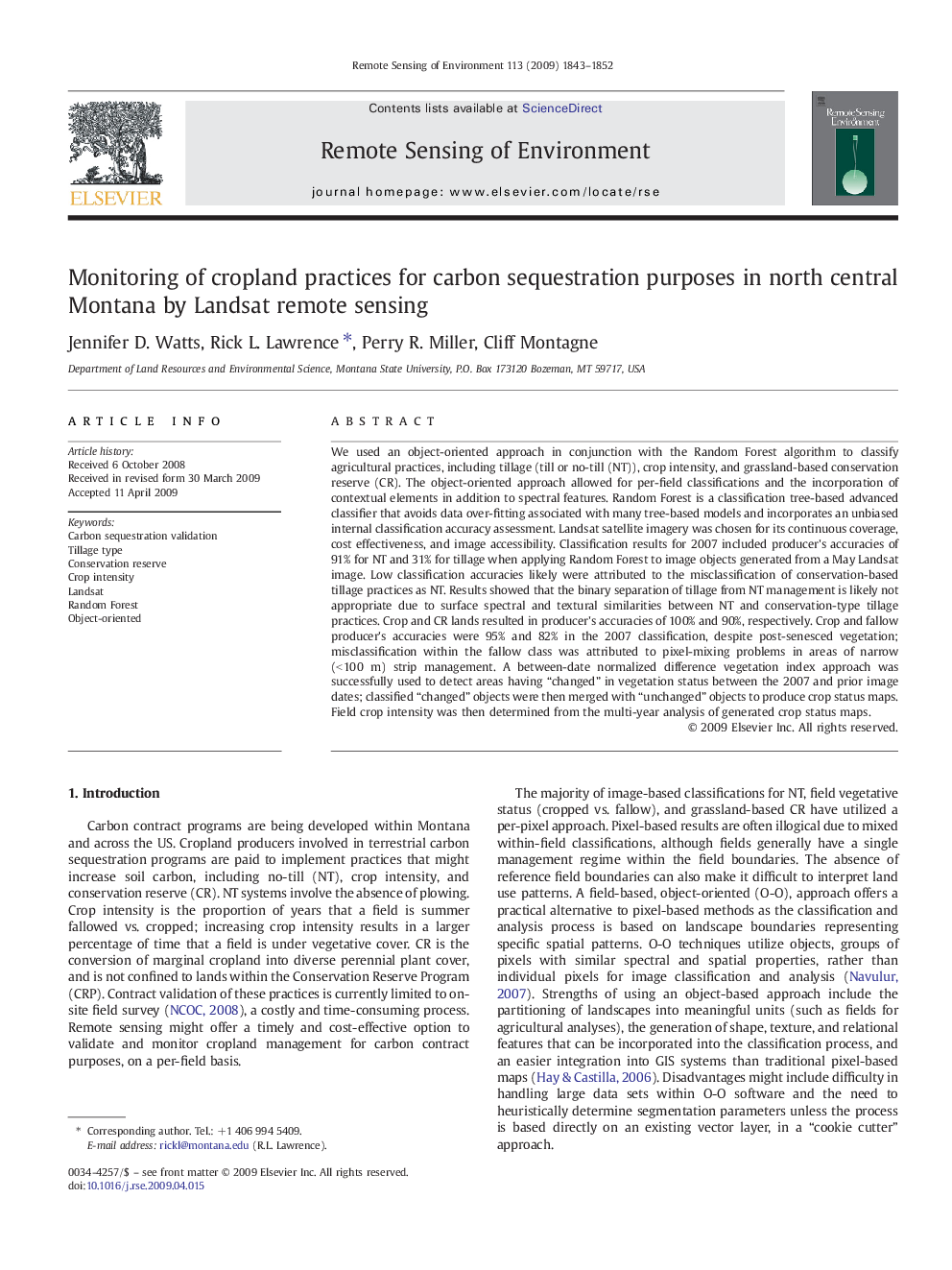| کد مقاله | کد نشریه | سال انتشار | مقاله انگلیسی | نسخه تمام متن |
|---|---|---|---|---|
| 4460151 | 1621312 | 2009 | 10 صفحه PDF | دانلود رایگان |

We used an object-oriented approach in conjunction with the Random Forest algorithm to classify agricultural practices, including tillage (till or no-till (NT)), crop intensity, and grassland-based conservation reserve (CR). The object-oriented approach allowed for per-field classifications and the incorporation of contextual elements in addition to spectral features. Random Forest is a classification tree-based advanced classifier that avoids data over-fitting associated with many tree-based models and incorporates an unbiased internal classification accuracy assessment. Landsat satellite imagery was chosen for its continuous coverage, cost effectiveness, and image accessibility. Classification results for 2007 included producer's accuracies of 91% for NT and 31% for tillage when applying Random Forest to image objects generated from a May Landsat image. Low classification accuracies likely were attributed to the misclassification of conservation-based tillage practices as NT. Results showed that the binary separation of tillage from NT management is likely not appropriate due to surface spectral and textural similarities between NT and conservation-type tillage practices. Crop and CR lands resulted in producer's accuracies of 100% and 90%, respectively. Crop and fallow producer's accuracies were 95% and 82% in the 2007 classification, despite post-senesced vegetation; misclassification within the fallow class was attributed to pixel-mixing problems in areas of narrow (< 100 m) strip management. A between-date normalized difference vegetation index approach was successfully used to detect areas having “changed” in vegetation status between the 2007 and prior image dates; classified “changed” objects were then merged with “unchanged” objects to produce crop status maps. Field crop intensity was then determined from the multi-year analysis of generated crop status maps.
Journal: Remote Sensing of Environment - Volume 113, Issue 9, September 2009, Pages 1843–1852